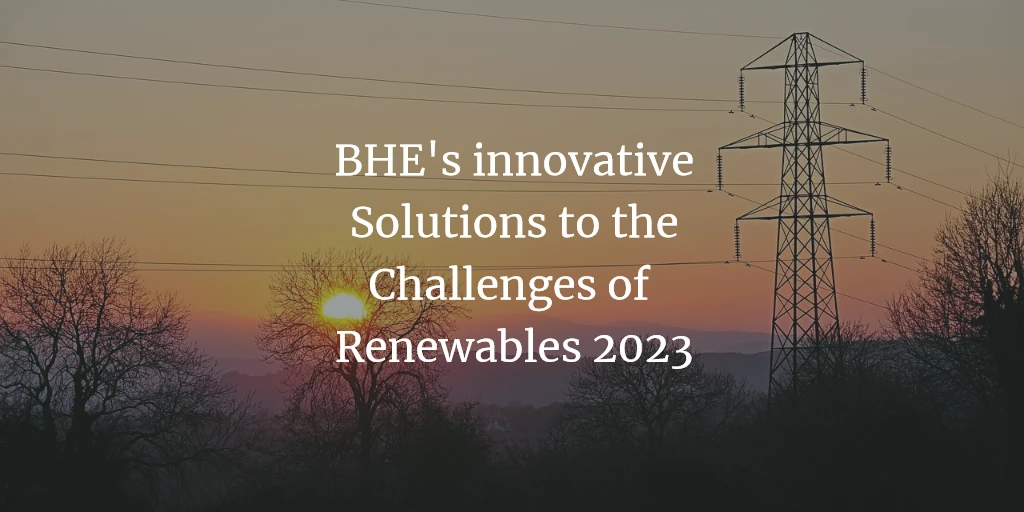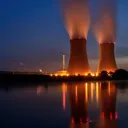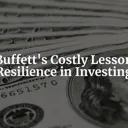Tags: BHE / Innovation
This fanpage is not officially affiliated with Berkshire Hathaway: Disclaimer
We explore Berkshire Hathaway Energy's [BHE's] commitment to addressing the energy storage and transmission challenge of renewable energy sources by investing in various innovative projects and initiatives.
We discuss how energy storage solutions can enhance grid reliability and accelerate the transition to renewable energy, ultimately benefiting the environment, economy, and society.
We conclude with an outlook on the promising future of BHE's energy storage and its potential impact on the renewable energy sector.

Introduction
Berkshire Hathaway Energy is a global leader in the production and distribution of energy from diverse sources, including wind, solar, hydroelectric, geothermal, natural gas and coal. The company is committed to investing in renewable energy projects that benefit the environment and its customers. As of 2022, Berkshire Hathaway Energy had more than 15,000 megawatts of owned renewable generation capacity, accounting for 45% of its total owned generation portfolio, see BHE 2022 FIIC presentation. The 45% are devided into 34% Wind, 5% Solar, 4% Hydro, and 1% Geothermal. These contributions are called "Noncarbon Power", for which a whopping $36 billion past investment is outlined as well.
However, renewable energy sources such as wind and solar have a major challenge: they are intermittent and variable, meaning they depend on weather conditions and time of day. This makes it difficult to match the supply of renewable energy with the demand of electricity consumers. To overcome this challenge, renewable energy needs to be stored when it is abundant and released when it is scarce.
This is where energy storage and transmission solutions come into play. Energy storage solutions can store excess renewable energy and dispatch it when needed, enhancing grid reliability, flexibility and resilience. They can also provide ancillary services such as frequency regulation, voltage support and ramping control to help balance the grid.
Berkshire Hathaway Energy's Investment in Energy Storage and Transmission
Berkshire Hathaway Energy is a leader in developing and deploying innovative energy storage solutions that support the integration of renewable energy sources, enhance grid reliability, and provide customers with more choices and flexibility. BHE has invested in various energy storage projects and initiatives across its businesses, leveraging its expertise and experience in natural gas, electricity, and renewables.
Some of the energy storage and transmission projects and initiatives that BHE is involved in include:
- BHE GT&S: BHE GT&S operates one of the nation's largest underground natural gas storage systems, with 756 billion cubic feet of total capacity, as well as one LNG export, import, and storage facility, and several other LNG processing and storage initiatives. BHE GT&S provides a variety of LNG solutions through Pivotal LNG, its 25% operating stake in Cove Point LNG, and JAX LNG. BHE GT&S also owns and operates three interstate natural gas pipeline systems that connect major supply basins with demand centers in the eastern U.S.
- BHE Renewables: BHE Renewables is developing a first-of-its-kind renewable energy microgrid-powered industrial site in Ravenswood, West Virginia on a 2000 acres area. The site will be powered by a combination of solar, wind, battery, and hydrogen technologies and will host a Precision Castparts Corp. facility that will produce titanium components for aerospace and defense applications. The project will create jobs, reduce emissions, and showcase BHE's capabilities in renewable energy integration and innovation.
- NV Energy: NV Energy is developing Greenlink Nevada, a transmission initiative that will tap into resource-rich renewable energy zones throughout western and northern Nevada, increase electric reliability, and drive job creation and economic development. The project will also enable NV Energy to expand its battery storage portfolio.
- PacifiCorp: PacifiCorp is investing in transmission infrastructure to strengthen the electric grid and facilitate the delivery of renewable energy to its customers. PacifiCorp has already placed in-service 575 miles of new transmission line through its Energy Gateway project and plans to build an estimated 2,365 miles of new high-voltage transmission lines through 2027. PacifiCorp is also pursuing several battery storage projects to enhance grid flexibility and reliability.
- AltaLink: AltaLink is enhancing the transmission grid in Alberta to provide the essential capacity needed for the province's transition to renewable energy. AltaLink has completed several transmission projects that deliver wind-generated electricity from southern Alberta to homes, farms, and businesses across the province. AltaLink is also exploring opportunities to deploy battery storage and other technologies to optimize grid performance and reliability.
BHE is committed to advancing energy storage and transmission solutions that benefit its customers, communities, and stakeholders. BHE's investment in energy storage demonstrates its vision of being the best energy company in serving its customers, while delivering sustainable energy solutions for a better tomorrow.
The Impact of Energy Storage on Renewable Energy in the United States
Renewable energy sources, such as solar and wind, have many benefits for the environment and the economy, but they also face some challenges. One of the main challenges is their variability and intermittency, meaning that they depend on weather conditions and time of day, and cannot always meet the demand for electricity. This can cause grid instability, power outages, and higher costs for consumers and utilities.
Energy storage solutions can help overcome these challenges by storing excess renewable energy when it is available and releasing it when it is needed. Energy storage can improve the reliability and efficiency of renewable energy by:
- Balancing supply and demand: Energy storage can match the generation of renewable energy with the consumption of electricity, reducing the need for fossil fuel backup plants and curtailment of renewable energy.
- Providing ancillary services: Energy storage can provide grid services such as frequency regulation, voltage support, and spinning reserve, which help maintain grid stability and quality.
- Enhancing grid resilience: Energy storage can provide backup power and islanding capability in case of grid failures or natural disasters, improving the security and reliability of the grid.
Energy storage and transmission can also accelerate the transition to renewable energy by:
- Lowering costs: Energy storage and transmission can reduce the capital and operational costs of renewable energy projects by increasing their utilization and revenue streams. Energy storage can also lower the costs of grid integration and transmission upgrades by reducing congestion and losses.
- Increasing market penetration: Energy storage can enable higher levels of renewable energy penetration in the grid by overcoming technical and regulatory barriers. Energy storage can also facilitate distributed generation and microgrids, which can increase access to renewable energy for remote and rural areas.
- Driving innovation: Energy storage and transmission can spur technological innovation and development in the renewable energy sector by creating new opportunities and challenges. Energy storage and transmission can also foster policy innovation and collaboration among stakeholders by creating new business models and incentives.
Conclusions and Outlook
Berkshire Hathaway Energy (BHE) has demonstrated its commitment to addressing the energy storage and transmission challenge of renewable energy sources through its investments in various innovative projects and initiatives. By focusing on energy storage and transmission solutions, BHE is facilitating the integration of renewable energy into the grid, enhancing grid reliability, and providing customers with greater choices and flexibility.
As the demand for renewable energy increases, energy storage and transmission will play a critical role in overcoming the challenges posed by the intermittency and variability of these energy sources. Energy storage and transmission not only ensures a more stable and efficient grid but also accelerates the transition to renewable energy by lowering costs, increasing market penetration, and driving innovation.
The future of energy storage and transmission looks promising, with technological advancements and economies of scale driving down costs and improving performance. As energy storage and transmission technologies continue to evolve, we can expect to see more innovative solutions being deployed to support the growth of renewable energy. Companies like BHE, which are at the forefront of investing in energy storage and transmission, will play a crucial role in shaping this future landscape.
Moreover, supportive policies and regulations are necessary to encourage the adoption of energy storage and transmission solutions and foster innovation in the sector. Collaboration among stakeholders, including utilities, regulators, technology providers, and customers, will be essential in ensuring the successful implementation and scaling of energy storage and transmission systems.
In conclusion, BHE's investments in energy storage and transmission highlight the company's vision of being a leader in providing sustainable energy solutions for a better tomorrow. By addressing the energy storage and transmission challenge, BHE is contributing to the expansion of renewable energy, ultimately benefiting the environment, the economy, and society as a whole. As the energy sector continues to evolve, BHE's commitment to energy storage and transmission will play a significant role in shaping a more sustainable and resilient energy future.











